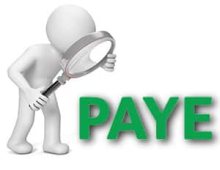Sir Paul Chambers was never a household name, even in his lifetime but he came up with an innovation that changed the economy. This was back in the early 1940s when the world was at war and those left behind in Whitehall began to think about the post-war era. We all know about the other institutions founded then, the National Health Service and state education for instance but less is said about the seismic shift in the way tax is collected. Before then, most people paid tax in arrears, calculating what they owed and paying a lump sum to the taxman. The system was clunky and fostered resentment every time tax came to be collected. Chambers’ idea was that pay should be deducted directly from most salaries before it reached the employee’s wallet. The system was called pay as you earn or PAYE.

Most employees these days have their taxes collected via PAYE, with the upshot that they never see their full wage, a fraction of which is directly collected and sent to the government on their behalf by their employers. In the early days PAYE only covered income taxes but since then other taxes including national insurance have been added and the system has been exported and copied around the world. There is a famous quote that “the act of taxation consists in so plucking the goose as to procure the largest quantity of feathers with the least possible amount of squealing”. And the reason the Treasury adores PAYE is that it plucks the feathers far more efficiently than a system where people actively have to hand over the cash themselves. It is no coincidence that council tax is among the least popular of all taxes because you actually see it leave your bank account.
[with thanks to Ed Conway of The Times 19/2/21]
Funnily enough PAYE is easy in another respect, in administering the scheme through a payroll system. PAYE is all based on a simple method of a personal tax code. This code may vary through a year for an individual any number of times for different reasons but usually it’s the same all tax year. For ourselves providing a payroll bureau service nowadays these coding changes are all handled automatically online. So no errors and no delays, better still no administration cost. So whichever way you look at it PAYE is very successful.
The opposite extreme however is furloughing which for us handling on behalf of our clients is a real minefield and at times a nightmare. The UK is on the 5th version, so far, and each one is different where it counts – in the detail. Each time a new version is announced the biggest challenge is obtaining all the detail required in sufficient time - surprisingly difficult. Whereas PAYE is totally automatic, furloughing is just the opposite – it’s totally manual, with no system checks to help. This means that with hundreds of claims being made, covering thousands of employees, inevitably mistakes will be made. It’s also a costly extra task. The pressure is great but it’s just something we have to cope with.




